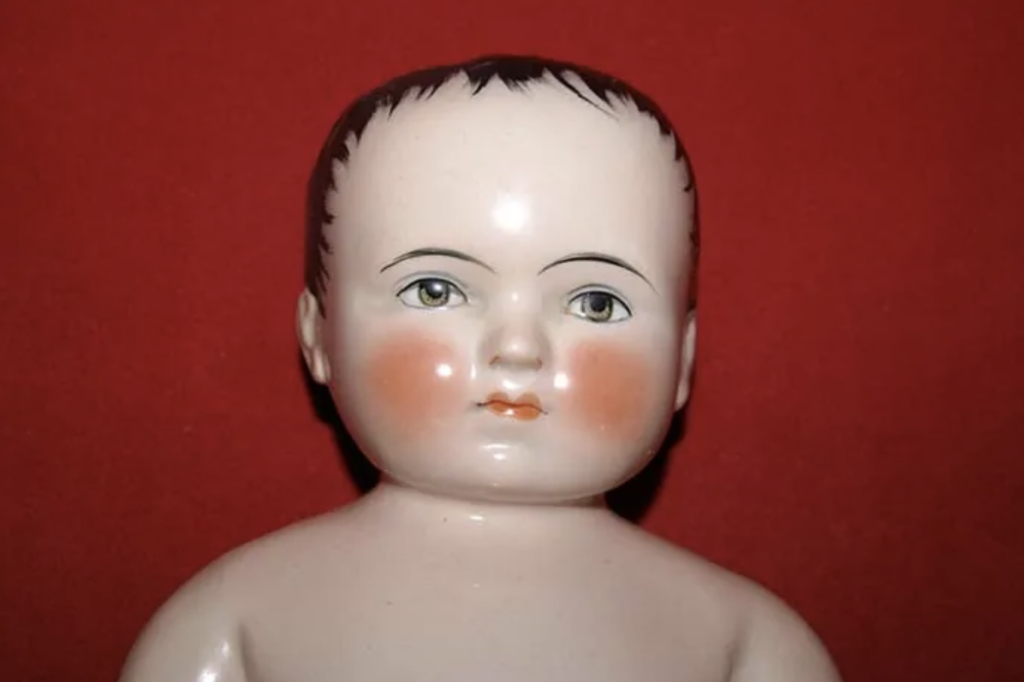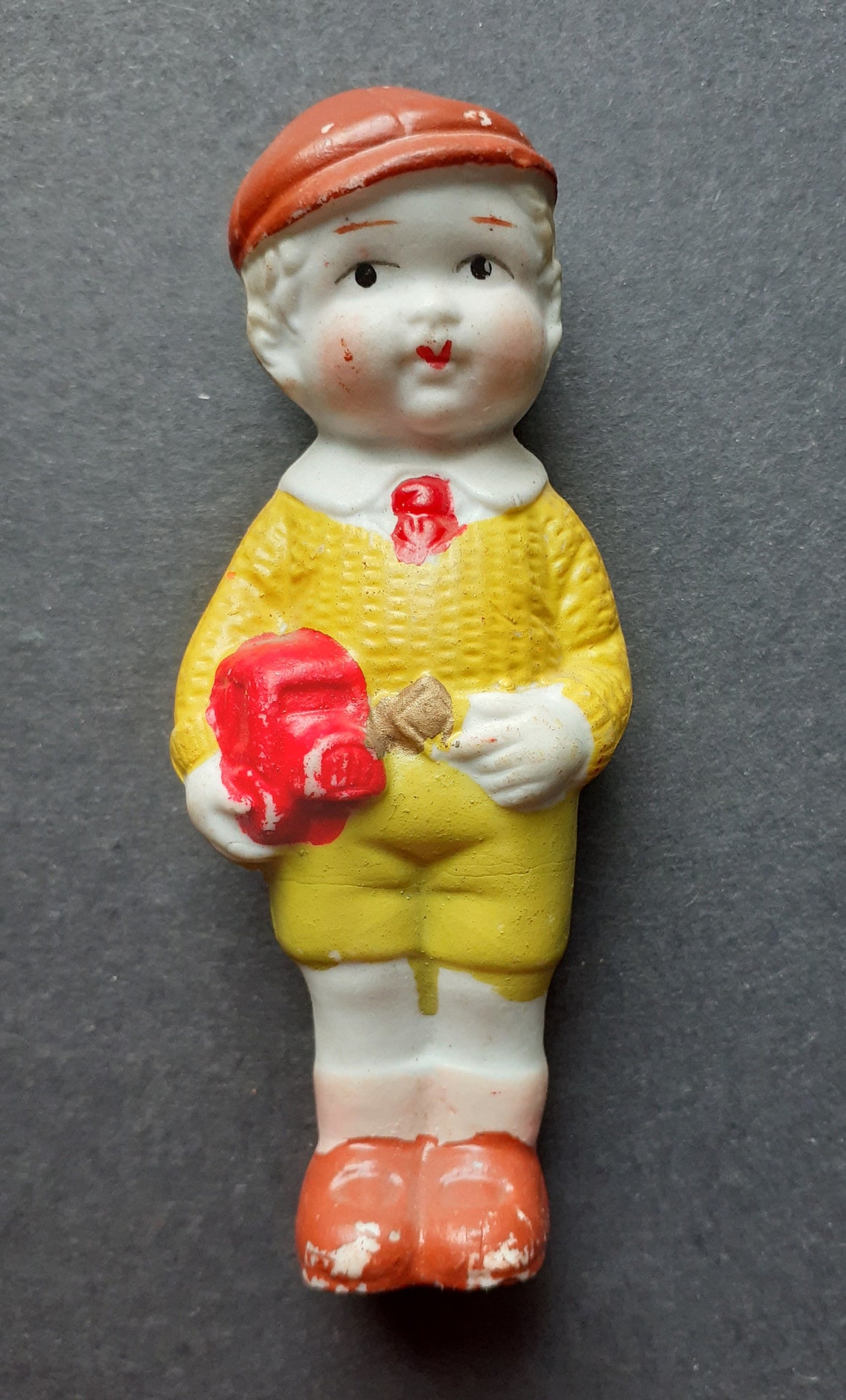Table Of Content

And in order to understand how the doll was so dubbed, you have to know something about the doll and legend on which its name is based. Frozen Charlotte dolls were popular during the late 19th and early 20th centuries in the United States. Smaller versions of the dolls were also known as penny dolls because they were often sold for a cent. These dolls were called badekinder or “bathing dolls,” because they could be completely submerged in water and given a bath.

Frozen Charlotte Dolls Were Inspired By A Young Woman Who Froze While Riding To A Ball
However, if you find such a doll dressed in homemade clothes, examine its body underneath the clothes which can, and often do, disguise a broken or damaged doll. These can be purchased inexpensively, but perfect examples cost much more, depending on features, size and type. Then, there are tiny Frozen Charlotte bathtub dolls sitting in a tub. Some have long hair flowing to their feet; others wear gilt boots, or shoes and socks molded on. Aside from Frozen Charlottes, which were three-quarters of an inch and larger, there were Frozen Charlies, representing Charlotte's beau.
Artifact of the Week: Frozen Charlotte Doll
The condition of a Frozen Charlotte doll plays a crucial role in determining its value. Collectors prefer dolls that are in excellent condition with minimal damage, such as chips, cracks, or paint loss. Or course, given that they are largely excavated finds, many are just torsos, or heads, or even just limbs. If you’re buying one or two, or perhaps just a head, the price is achievable. But if you want to create a collection, be prepared to spend $100 at a minimum.
The True Story of Frozen Charlotte Dolls
One indeed finds many occurrences of the phrase “Frozen Charlotte” in 19th-century newspapers, magazines, and books, but these invariably refer to the dessert (and sometimes to the ballad) and not to a doll. An origin-story for the dessert based on “A Corpse Going to a Ball” is simply unnecessary. The Frozen Charlotte doll is made in the form of a standing, naked figure molded as a solid piece. The dolls are also sometimes described as pillar dolls, solid chinas, or bathing babies.
Action Figure Insider » Living Dead Dolls Resurrection Frozen Charlotte Variant - Action Figure Insider
Action Figure Insider » Living Dead Dolls Resurrection Frozen Charlotte Variant.
Posted: Thu, 20 Dec 2018 08:00:00 GMT [source]
Adorn your Christmas tree with these miniature treasures or use them in your festive table settings to add a touch of nostalgic charm.
Plus, many of the dolls for sale today on sites like eBay and Etsy are not pre-owned dolls, but rather those excavated in Germany. That the name “Frozen Charlotte” was coined within the doll-collecting community sometime slightly before or around World War 2 is evident in doll collector/historian Eleanor St. George’s 1948 book, Dolls of Yesterday [see also Note 4]. He stripped the mantle off her brow, And the pale stars on her shone, And quickly into the lighted hall, Her helpless form was born.
Largest archaeological dig in New Zealand unearths thousands of 19th-century treasures - Stuff
Largest archaeological dig in New Zealand unearths thousands of 19th-century treasures.
Posted: Wed, 21 Sep 2022 07:00:00 GMT [source]
They were baked into cakes and dropped into baths.
Not long after this complaining she said that she felt perfectly comfortably, was now quite warm, and that there was no necessity of delay on her account. They reached, at length, the house where the company were gathering; the young man leaped from the sleigh, and extended his hand to assist her, but she answered not; she was dead – stone dead – frozen stiff – a corpse on the way to the ball. These inexpensive fixed-joint dolls, generally known in the 19th century as “penny dolls” and now commonly known as “Frozen Charlottes,” acquired the legend-based name long after the 19th century had ended.
Be the first to know about new products, events, and special offers
This is pretty remarkable, considering the near-universal belief that this time period was the origin of the dolls’ name. Because they were made on a production line to be sold dirt-cheap, such dolls often had facial features painted on in a hit-and-miss fashion, adding to their charm. Some, dating from the 1920s, have tiny arms molded on their chests as if clutching their hearts, thus the label "hand-on-my-heart" dolls. There were also many rudely made Frozen Charlotte-style dolls that were popular in the 1920s and '30s and sold inexpensively as cake decorations and party favors. Such dolls were mass-produced in Germany, Japan and the United States. Also popular in the 1880s and '90s were numerous little dolls with china heads, arms and feet attached to nankeen cloth bodies in varying sizes.
The Secret to China's Bounciest Meatballs

This tale, sometimes condensed, was reprinted across the United States in the early 1840s and made its way into British newspapers. Further, it was adapted to poem (or “ballad”) form in early 1841 and credited to “Mrs. Seba Smith” (Elizabeth Oakes Smith, née Prince), an American writer and early feminist. In late 1843 the poem was republished in The Rover, a magazine edited by Smith’s husband; oddly, this time Seba Smith himself was credited as its author.
The person who discovered the porcelain figure in their slice of cake would be crowned king or queen of the festivities. By the time the small, white porcelain dolls were introduced to the U.S. by Germany in the mid-1800s, they were quickly and commonly dubbed “Frozen Charlottes” and their male counterparts “Frozen Charlies.” Except… they weren’t. The dolls became so linked to the Frozen Charlotte story that people even bought Frozen Charlotte dolls sold in tiny caskets, like the tomb that held Charlotte in Smith's poem.
If the doll has a known history, it may be more desirable to collectors. Well, I’m not a ghost expert that’s for sure, but my guess would be no! If you look at their history, these dolls were thought to bring good luck.
The smallest dolls were sometimes used as charms in Christmas puddings. Occasionally, versions are seen with a glazed china front and an unglazed stoneware back. This enabled the doll to float on its back when placed in a bath.
The doll’s origins—as a German bath-time novelty, meant to float in a tub—were innocent, but its arrival in the United States, in the mid 1800s, coincided with the popularity of a morbid song. The story goes that Maine writer Seba Smith stumbled upon a newspaper story that recounted how a young woman froze to death in her carriage on the way to a ball. Hit with inspiration, Smith, who is also known as the first to record the word scrumptious, scribbled a poem on the theme. Published in 1843, A Corpse Going to a Ball described how on a frosty night, a young lady named Charlotte refused to wear a blanket over her fine clothes.
Other items decomposed, like wooden toys and stuffed animals, but items made with glass, metal, and now plastic still survive and are found on the beach. Waist is measured at natural point (ask girl to bend to one side to find natural crease of her waist; measure around this point). Join us to celebrate the return of this beloved American Girl tradition. You and your girl will enjoy a full teatime experience, including dainty tea sandwiches and assorted sweet treats with a pot of tea, plus each child will enjoy a craft activity at the table. The Kingman [Kansas] Citizen tells of a novel plan adopted by Judge Peters to keep from being bored by attorneys.
Victorian women might have decorated their shelves with delicately painted Frozen Charlotte dolls. But Americans renamed the dolls Frozen Charlotte and gave them a creepy backstory. A documented history of ownership, or provenance, can significantly impact a doll’s value.

No comments:
Post a Comment